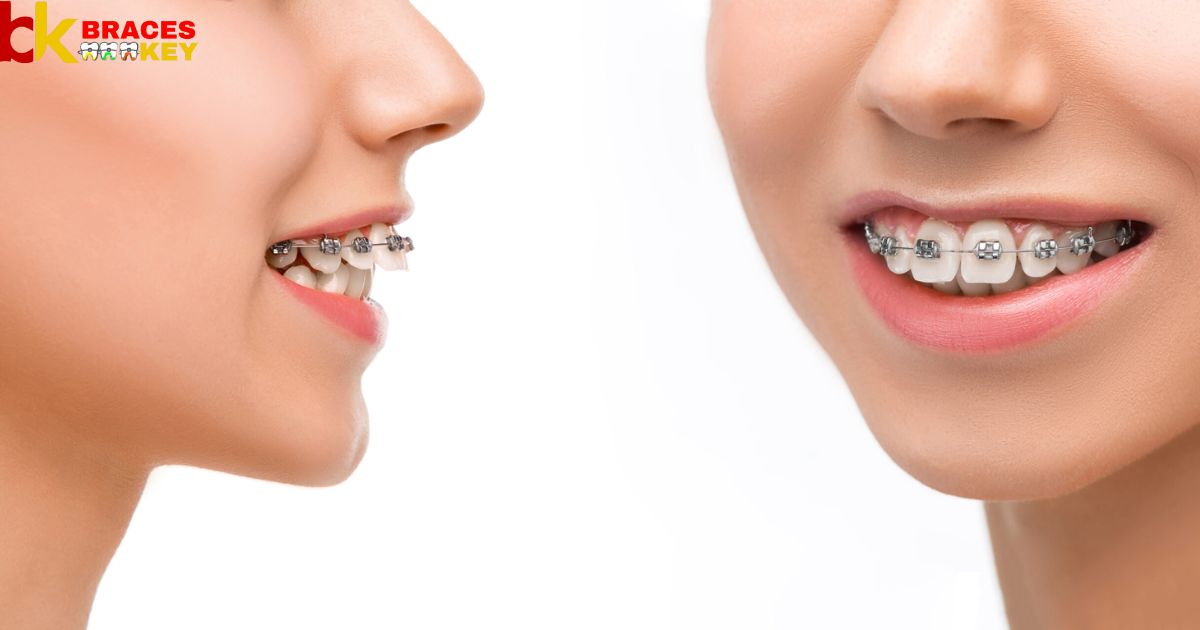An overbite is a malocclusion where the upper teeth overlap or cover the lower teeth when the person tries to bite together. It happens due to the upper teeth being positioned too far forward or the lower jaw being too far back.
An overbite can vary from mild to severe. It may cause teeth abrasion, speech problems, jaw discomfort, or difficulty chewing certain foods. A dentist can properly assess the overbite severity via examination and X-rays. Left untreated, a severe overbite may worsen over time.
Treatment for overbite depends on its degree. Mild cases may only need dental appliances or teeth grinding. Moderate overbites may require braces to correct jaw alignment. In severe overbites where orthodontics is not enough, a teeth correction procedure along with braces and in some cases jaw surgery may be needed for long term stability.
Key Takeaways
- An overbite occurs when the upper teeth are positioned too far forward or the lower jaw is positioned too far back, causing the upper teeth to overlap or cover the lower teeth.
- Overbites can range from mild to severe, depending on how much the teeth overlap or are out of alignment.
- Consequences of an untreated overbite include teeth abrasion, speech difficulties, jaw discomfort, and trouble chewing certain foods.
- Mild overbites may only require dental appliances or teeth grinding to correct. Moderate cases may need orthodontic treatment like braces. Don’t miss to read out this topic Power Chain Braces.
- Severe overbites sometimes require both orthodontics and jaw surgery to properly realign teeth and jaws for long-term stability. It’s a more complex process than using braces alone.
Overview Of Overbite
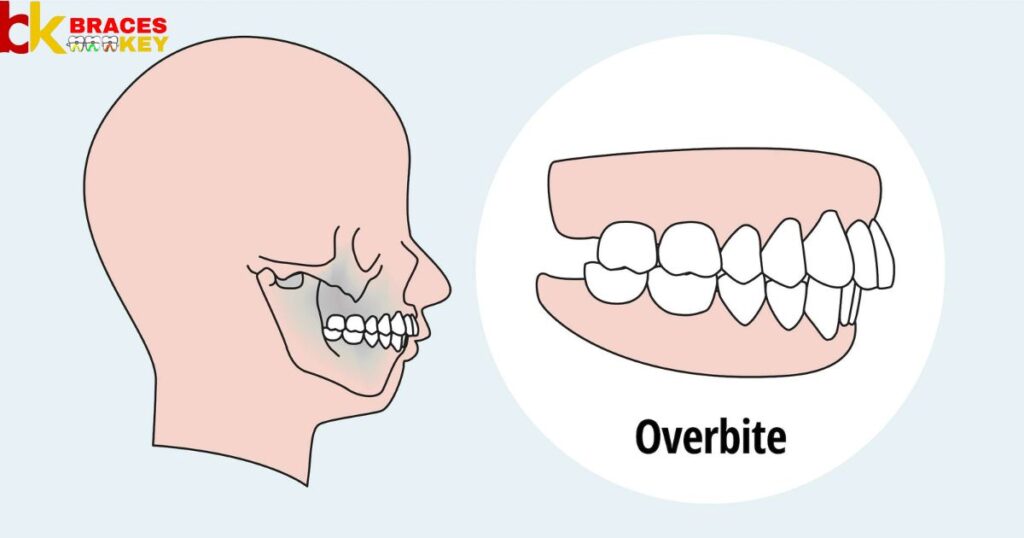
An overbite occurs when upper teeth are misaligned beyond lower teeth during closure. Mild cases involve minimal overlap, while severe overbites showcase full coverage with improper jaw formation.
Untreated overbites risk damage through abrasion and chewing difficulty over time. Orthodontics often remedies minor irregularities via appliances or braces. More complex situations may require jaw surgery for repositioning.
Step By Step Guide To Overbite
- Examine teeth alignment when biting together – an overbite shows upper teeth protruding beyond the lower teeth.
- Determine the severity by measuring overlap – a mild overbite is 1-3 mm, moderate 4-6mm, and severe over 7mm of upper teeth projecting past lower.
- Check for signs like worn down top teeth and bite marks on the palate – an overbite places undue stress on some teeth and jaw joint over time if left untreated.
Deep Overbite Bite & Braces
A troublesome overbite looms large and deep, jaw and teeth in a clamp no smile can reap. But orthodontic art comes to the rescue in time, with braces and wire that treat the misaligned crime.
Slow adjustment shifts bite into upright view, top teeth now nestle neatly behind teeth that chew. Confidence blooms with a straight, balanced grin secured, dental misfortune now definitively cured!
Types Of Overbites
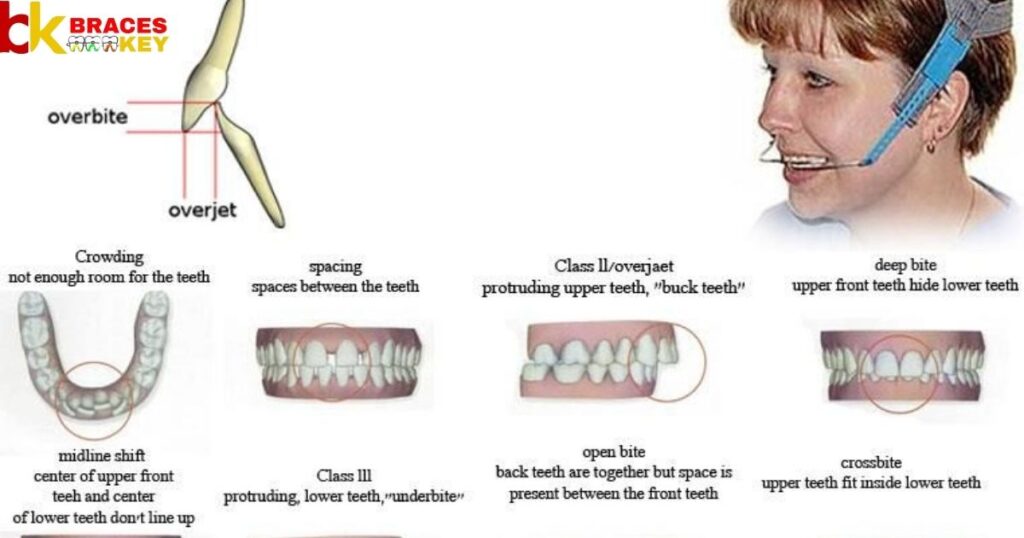
The overbite comes in classes to define its degree, from mild to severe in its expression’s sway. The open comprises teeth just touching at the tops, while moderate and full reveal much lessness and stops. Edge-to-edge brings jaws together with skill, but lips must help show teeth without excess till.
Then the whole over shadow lowers completely with force, braces take note to shift to a better course! Jaw and smile types range, orthodontics can steer, teeth to their best positions both far and near.
Vertical Overbite
The vertical overbite presents orthodontics’ heighted test, with top teeth perching poised just over bottom rest. Braces and appliances this challenge can reckon, shifting jaws and grins with skillful precision. Slow alignment alters bite from this slanted norm, till arches’ curvature and function sits reformed.
Horizontal Overbite
The horizontal overbite bespeaks a jaw out of line, with upper teeth jutting past lowers in defiance of design. Orthodontics takes the challenge without fret, employing braces to shift the slanting arches into the correct set. Archwires apply gentle pressure on laborers slowly, to bring grin and bite into balanced flow.
Overbite V.S Overjet
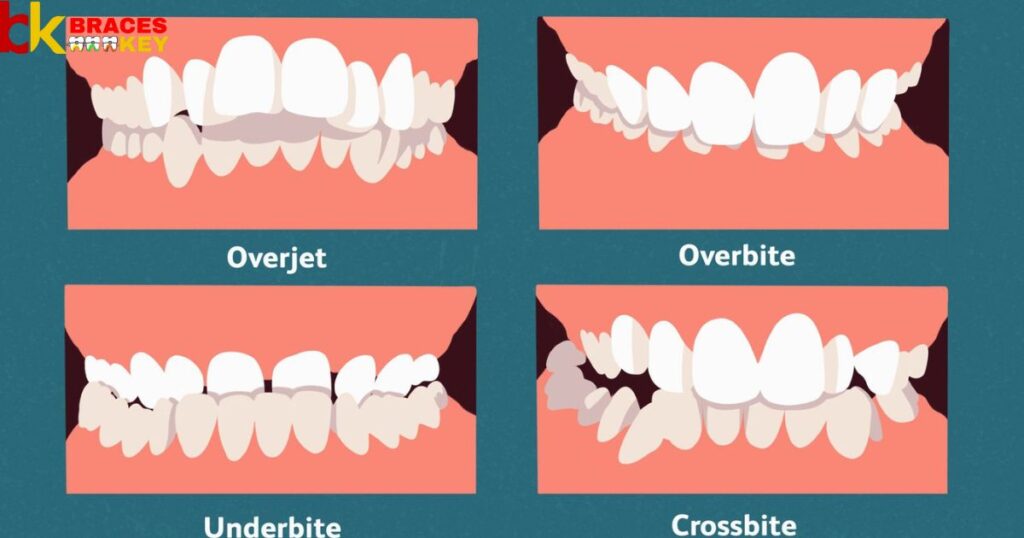
When teeth and arches fail to meet just right, the overbite or overjet comes into sight. The overbite concerns upper teeth that overlap too deep, while the overjet means front six protrude from the line they should keep.
Braces can each type of misalignment supplant, meticulously shifting jaws till new order is granted. Great care and patience make malocclusions flee, leaving smiles radiant in symmetry and glee.
Symptoms Of Overbite
An overbite’s existence will make itself clear, through certain tell-tale signs evident from near and far. The front teeth will protrude down the lower lip’s slope, and chewing motions may cause an ungainly grope.
Closing the mouth presents an overlapping view, and orthodontic assessment will elicit alignment errors espy. But fear not, for braces can correct nature’s mistakes, and leave teeth and jaw in balanced bites for grins’ sakes.
What Is An Overbite In Teeth?
An overbite stems from misaligned teeth and jaws that don’t fit right, with uppers settling farther past lower in crunching might. It occurs when top teeth lap o’er those of the lower shore, past the point proper occlusion requires and nature’s plan implores.
Orthodontics can remedy such dental disarray, straightening the smiles through wire, brackets and careful play. Then chompers will meet edge to edge as designers ordain, for nutrition’s function and attractive men’s gain.
What Is An Overbite And Underbite?
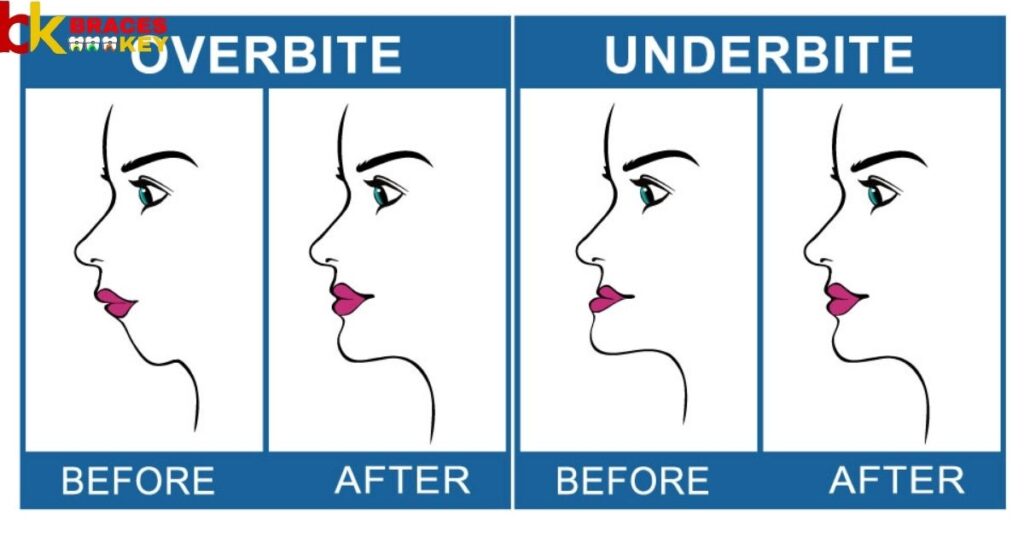
The overbite and underbite each convey out of line, upper or lower teeth positioned past where they should shine. When the top teeth overlap lower incisors’ territory unduly, it’s called an overbite with its misalignment duly.
But if bottom chompers protrude past uppers’ stated peak, it takes the form of an underbite, equally unchic. Braces have power to straighten such errors with care, settling each arch and jaw just where it belongs with flair.
What Is An Overbite In A Dog?
Man’s best friends sometimes have teeth that don’t align as they should, with upper jaws extending past lower – called an overbite, understood. This malocclusion puts pressure on tender tongues and gums galore, orthodontic intervention can fix such issues and then some more.
Helping fangs fit right prevents future health concerns from arising, and leaves puppers charming pearly whites for admiring eyes appraising. Well-adjusted bites ensure canine’s lives stay comfy and bright.
What Is An Overbite Look Like?
An overbite is easy to spot by keen eyes glancing near, as top teeth peak past bottoms with overlapping skein clearly. The front incisors always first draw the watcher’s gaze, protruding down from the top lip to lead others’ display.
Chewing brings compulsions of a certain type too, with fingers used in aid as the mouth tries its chomping stew. But orthodontic remedies malalignments with artful care, leaving teeth meeting just so – a beautiful smile to bare.
Symptoms And Causes

When symptoms appear it’s clear something’s gone awry, to find the causes is orthodontists work and eye. Pressure and pain may trouble the teeth and gums each day, while chewing proves tricky in an unbalanced way.
Jaws or teeths’ position grew as heredity dealt, but habits or accidents can also prevent mouths from developing well. Through scans and exams the genesis will be revealed, so treatment addresses each cause, symptom appeal. Good aligned teeth and jaws result, a healthy smile gleams.
Diagnosis And Tests
To pinpoint problems precisely requires assessment’s art, beginning with notes on symptoms and dental history. Physical exams inspect grins from each necessary view, while models and scans provide diagnosticians with X-ray prow.
Using tools like study models, photographs and panoramic film, orthodontists collect objective data to diagnose with acute keenness. This allows for careful classifying of bite flaws great and small, leading to personalized treatment planning for best results.
Management And Treatment
With diagnosis done, a tailored plan is deployed, using methods to guide jaws and teeth seamlessly alloyed. Braces or aligners apply controlled pressure each day, persuading misplaced teeth to find their destined way. Regular monitoring tracks corrections in motion swift, surgically assisted options may also lend a deft lift.
In time, newly balanced bites are revealed to see, management achieves aesthetics and functional quality. All thanks to the treatment’s skilled orthodontic hand, health and confidence are restored with a beautiful smile brand.
Overbite Vs Normal

An overbite denotes nature’s plan went awry, with the norm being teeth that fit like pieces in a jig. A normal occlusion brings incisors edge to equal edge, while an overbite shows lower recesses in a ridge.
Mastication proves trying for one in its plight, the other chews easy and smiles take uniform flight. Yet orthodontics restores harmonious bites and grins, fixing misalignments with tried approaches that have stood the test of years.
FAQ’s
What Is An Overbite And How Is It Corrected?
An overbite is when the top teeth overlap the bottom teeth when biting. Correcting it can involve braces, retainers or in severe cases, jaw surgery to realign the bite into a healthy position.
Is It Ok To Have An Overbite?
A slight overbite poses no issues and won’t impact oral health. An overbite that is very pronounced can lead to teeth alignment problems or jaw discomfort, so it’s wise to have an orthodontist assess.
What Is The Main Cause Of Overbite?
Genetics often play a role in overbites, as the tendency can be inherited. Thumb-sucking habits past early childhood or abnormal swallowing patterns sometimes influence the development of an overbite as well.
How Is An Overbite Corrected?
Orthodontic treatment usually involves braces or aligners to correct the bite over time. In some cases, a palate expander may first be used to make room before braces realign the teeth into proper positioning.
Conclusion
An overbite occurs when the upper teeth overlap the lower teeth when the back teeth are biting together. It is a common condition that affects many people to varying degrees. A mild overbite is considered normal and causes no issues, An Overbite.
A severe overbite may require orthodontic treatment through devices like braces to realign the bite for better function and oral health long-term. Seeing an orthodontist can help determine if correction is needed.
